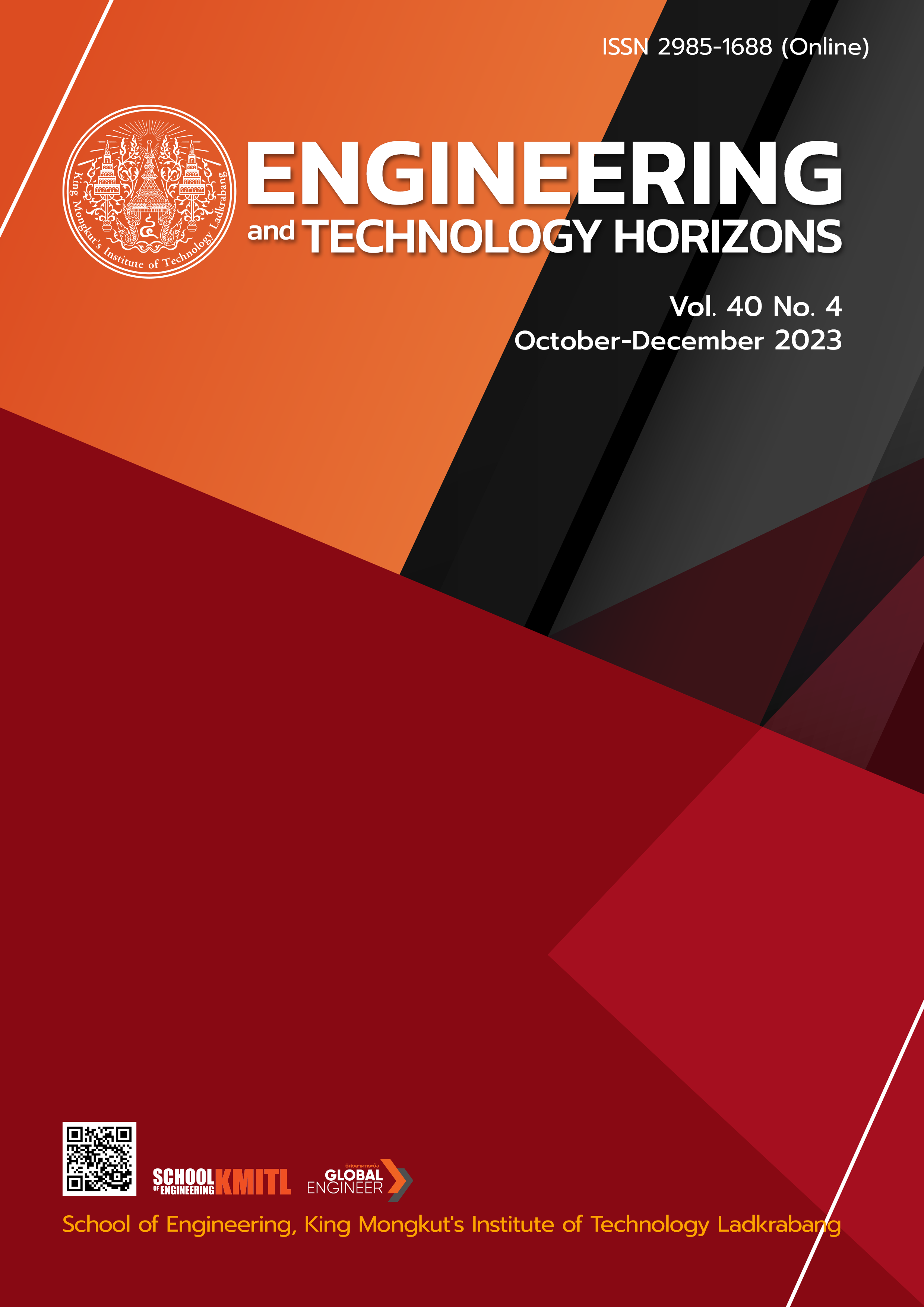Effect and Determination of Oxide Trapped Charge and Interface Trapped Charge Density of Threshold Voltage Shift in Irradiated MOSFET by Subthreshold Methodology
DOI:
https://doi.org/10.55003/ETH.400409Keywords:
NMOS, PMOS, Threshold voltage, SubthresholdAbstract
This paper presents the effects and determination of oxide and interface trapped charge density of threshold voltage shift in irradiated MOSFET by subthreshold methodology. The designed dimension, channel width per channel length (W/L) is 20 mm/20 mm. The threshold voltage is extracted by a linear extrapolation methodology. The over all threshold voltage shifts are caused by oxide trapped charge and interface trapped charge. The subthreshold methodology determines the interface trapped charge. The 60Co gamma-ray source was used for irradiation to a total dose of 10 kGy. The results showed that the threshold voltage shift is approximately -24 mV/kGy for NMOS and -27 mV/kGy for PMOS. The subthreshold swing shift is approximately 1.2 mV/dec.kGy for NMOS and 0.9 mV/dec.kGy for PMOS. The oxide trapped charge density NOT and interface trapped charge density NIT are found to be increased in NMOS and PMOS respectively. The ratio of ΔNOT/ΔNIT was approximately 2.2 times for NMOS and 2.8 times. Due to the structure, the channel of NMOS is a surface channel whereas the channel of PMOS is a buried channel. Finally, the effect of gamma irradiation on the PMOS was greater than the effect on NMOS observed from the change in threshold voltage and the ratio of ΔNOT/ΔNIT.
References
J. Shapiro, “The Absorbed Dose—A Measure of Energy Imparted to a Medium,” in Radiation Protection: A Guide for Scientists and Physicians, 4th Ed., Cambridge, MA, USA: Harvard University Press, 2002, ch.2, sec.11, pp. 60–63.
J. R. Schwank, M. R. Schaneyfelt, D. M. Fleetwood, J. A. Felix, P. E. Dodd, P. Paillet and V. Ferlet-Cavroi, “Radiation Effect in MOS Oxides,” IEEE Transactions on nuclear science, vol. 55, no. 4, pp. 1833–1853, 2008, doi: 10.1109/TNS.2008.2001040.
J. McWhorter and P. S. Winokur, “Simple Technique for Separating the Effects of Interface Traps and Trapped Oxide Charge in MOS Transistors,” Applied Physics Letters, vol. 48, no. 2, pp. 133–135, 1986, doi: 10.1063/1.96974.
K. Roy, S. Mukhopadhyay and H. Mahmoodi-Meimand, “Leakage Current Mechanisms and Leakage Reduction Techniques in Deep-Submicrometer CMOS Circuits,” Proceedings of the IEEE, vol. 91, no. 2, pp. 305–327, 2003, doi: 10.1109/JPROC.2002.808156
P. S. Winokur, J. R. Schwank, P. J. McWhorter, P. V. Dressendorfer and D. C. Turpin, “Correlating the Radiation Response of MOS Capacitors and Transistors,” IEEE Transactions on Nuclear Science, vol. 31, no. 6, pp. 1453–1460, 1984, doi: 10.1109/TNS.1984.4333529.
S. M. Sze and K. K. Ng, “MOSFETs,” in Physics of Semiconductor Devices, 3rd ed., Hoboken, NJ, USA: John Wiley & Sons, Inc., 2006, ch. 6, sec. 2, pp. 297–320.
H. Jafari, S. A. H. Feghhi and S. Boorboor, “The effect of interface trapped charge on threshold voltage shift estimation for gamma irradiated MOS device,” Radiation Measurements, vol. 73, pp. 69–77, 2015, doi: 10.1016/j.radmeas.2014.12.008.
S. Boorboor, S. A. H. Feghhi and H. Jafari, “Investigation of Threshold Voltage Shift in Gamma Irradiated N-Channel and P-Channel MOS Transistors of CD4007,” World Academy of Science, Engineering and Technology International Journal of Physical and Mathematical Sciences, vol. 11, no. 5, pp. 191–195, 2017
Y. Taur and T. H. Ning, “MOS Capacitors,” in Fundamentals of Modern VLSI Devices, 2nd ed., Cambridge, UK: University Press, 1998, ch. 2, sec. 3, pp. 103–108.
P. R. Gray and R. G. Meyer, “Bipolar, MOS, and BiCMOS Integrated-Circuit Technology,” in Analysis and Design of Analog Integrated Circuits, Hoboken, NJ, USA: John Wiley & Sons Inc., 1993, ch. 2, sec. 8, pp. 127–131.
Downloads
Published
How to Cite
Issue
Section
License
Copyright (c) 2023 Faculty of Engineering, King Mongkut’s Institute of Technology Ladkrabang

This work is licensed under a Creative Commons Attribution-NonCommercial-NoDerivatives 4.0 International License.
The published articles are copyrighted by the School of Engineering, King Mongkut's Institute of Technology Ladkrabang.
The statements contained in each article in this academic journal are the personal opinions of each author and are not related to King Mongkut's Institute of Technology Ladkrabang and other faculty members in the institute.
Responsibility for all elements of each article belongs to each author; If there are any mistakes, each author is solely responsible for his own articles.






